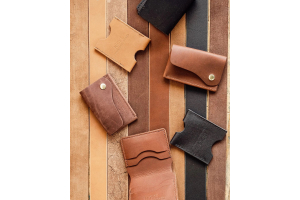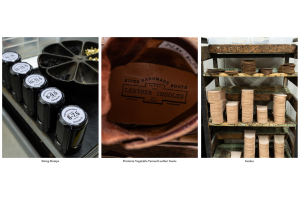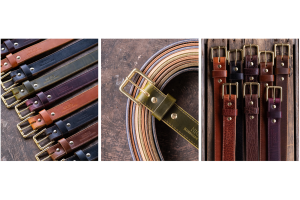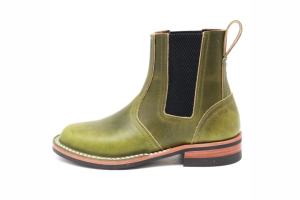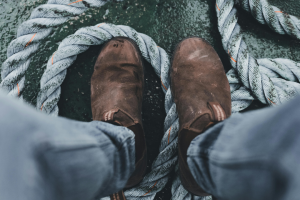Leather Jacket Care: Tips For Keeping It Clean And Fresh
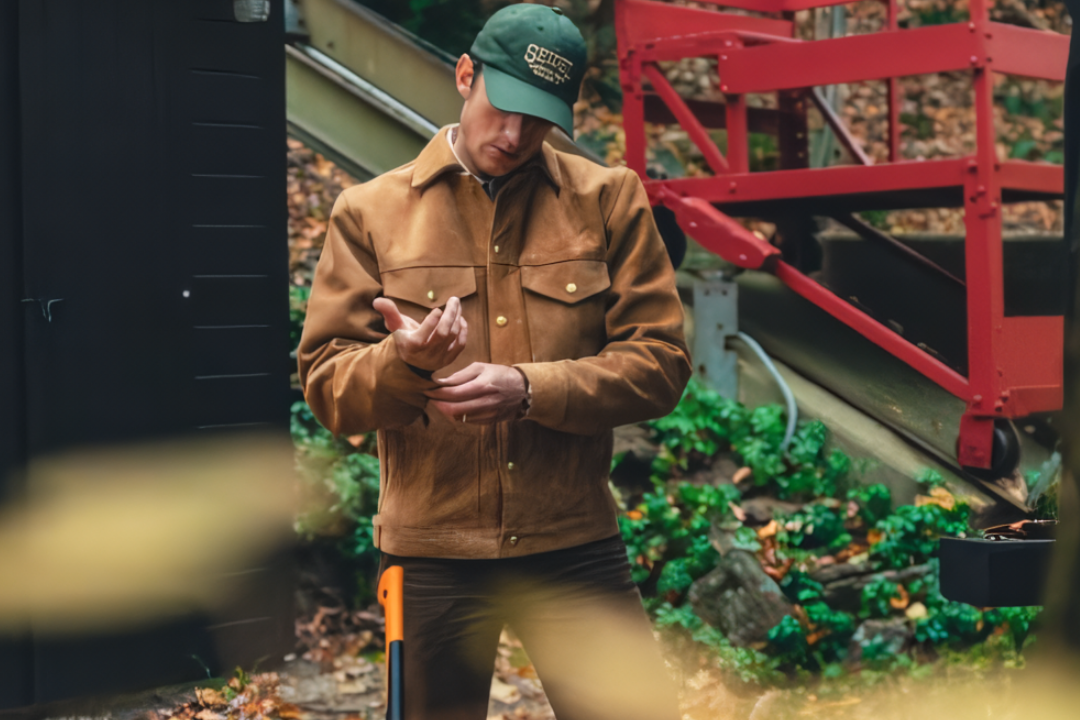
Key Takeaways:
- Clean with Care: Using the right cleaning products and techniques is essential to prevent drying, cracking, or damage. Always opt for mild soap, soft cloths, and air drying.
- Keep Leather Moisturized: Leather needs moisture to stay flexible and prevent cracking, so regular conditioning helps maintain its natural oils. Over-conditioning, however, can weaken the material.
- Store It Properly: A leather jacket should be stored on a padded hanger in a cool, dry space to prevent warping and mold growth. To preserve its longevity, avoid plastic covers and direct sunlight.
How do you keep a leather jacket looking as rich and refined as the day you bought it? Leather is a timeless material, but without proper care, it can lose its natural oils, develop cracks, or absorb tough-to-remove stains. Regular cleaning and maintenance preserve its beauty and extend its lifespan, ensuring it remains a staple in your wardrobe for years to come.
At Nicks Boots, we don’t just admire high-quality leather—we craft it. Every jacket we design is built with durability, character, and craftsmanship in mind, made to age gracefully with the right attention and care. Our expertise in leather goods means we understand the nuances of different leather types, the best cleaning methods, and how to keep them looking their best, no matter how often they’re worn.
In this guide, we’ll explain how to clean a leather jacket properly, from routine maintenance to removing stubborn stains. Whether you have a classic black biker jacket or a rugged roughout piece, these expert tips will help you maintain its rich texture, color, and durability.
Understanding Your Leather Type
Not all leather jackets are the same; knowing what kind of leather you have is crucial before you start cleaning. Different types of leather react differently to moisture, cleaning agents, and conditioning treatments, so using the wrong method can do more harm than good.
The most common types of leather used in jackets include full-grain, top-grain, genuine leather, and suede or nubuck. Full-grain leather is the most durable and develops a beautiful patina over time, while top-grain leather is slightly more processed for a smoother finish. Genuine leather is often more affordable but less durable, requiring extra care to prevent wear. On the other hand, suede and nubuck have a soft, velvety texture that demands delicate handling and special cleaning techniques.
Before cleaning, check your jacket’s tag or product description for details about the leather type. If that information isn’t available, a simple touch test can help—smooth and firm leathers tend to be full-grain or top-grain, while soft and fuzzy textures indicate suede or nubuck. Jackets like the Patriot Type 3 and Ranchman serve as great examples, each featuring distinct leather finishes that require specific care. Knowing this will help you choose the right products and methods to keep your jacket looking its best.


Step-By-Step Guide To Cleaning A Leather Jacket
Cleaning a leather jacket requires a gentle approach to preserve natural oils and prevent damage. Unlike fabric garments, leather absorbs moisture and chemicals differently, so using the right products and techniques is essential. With proper care, your jacket will maintain its softness, rich color, and durability for years.
Step 1: Gather Your Supplies
Before you begin, make sure you have everything you need to clean your leather jacket safely. You’ll need a soft, damp cloth or microfiber towel, a mild soap or leather-specific cleaner, a dry lint-free cloth, and a leather conditioner for finishing. The right tools will help you clean effectively without causing unnecessary wear or damage.
Step 2: Remove Surface Dust And Dirt
Start by wiping down the jacket with a dry microfiber cloth to remove surface dust, dirt, and light debris. Pay extra attention to high-contact areas like the collar, cuffs, and pockets, as these spots collect oil and grime. If your jacket has been stored for a while, a quick dusting will help maintain its natural luster before a deeper clean.
Step 3: Spot Clean Small Stains
For minor stains, dampen a soft cloth with lukewarm water and add a drop of mild soap, such as baby shampoo or dish soap. Gently rub the stained area in small circular motions, ensuring not to oversaturate the leather, as too much moisture can weaken its structure. Once the stain begins to lift, wipe away any soap residue with a clean, damp cloth and let it air dry naturally.
Step 4: Deep Clean When Needed
If your jacket looks dull or has accumulated dirt over time, a full wipe-down with a leather cleaner can help restore its freshness. Lightly dampen a cloth with the cleaner and gently wipe the entire jacket, ensuring even coverage without soaking the material. Avoid harsh chemicals or excessive water, as both can strip the leather of its natural oils and cause long-term damage.
Step 5: Condition For Extra Protection
Once the jacket is completely dry, applying a leather conditioner will help keep it soft and prevent cracking. Use a small amount and rub it into the leather in gentle, circular motions with a clean cloth, allowing the material to absorb the moisture. Conditioning is especially crucial for full-grain and top-grain leather, as it helps maintain flexibility and enhances the jacket’s natural patina over time.
Step 6: Let It Air Dry Naturally
After cleaning and conditioning, always allow your jacket to air dry in a cool, well-ventilated area away from direct sunlight or heat sources. Never use a hairdryer, radiator, or any forced heat to speed up the drying process, as excessive heat can dry out and stiffen the leather. Hanging the jacket on a padded hanger will help maintain its shape while it dries, ensuring it remains in excellent condition.
How To Remove Stains From A Leather Jacket
Accidents happen; stains on a leather jacket can be frustrating, but they don’t have to be permanent. The key is to act quickly and use the right cleaning method based on the type of stain. Whether it’s oil, ink, water, or something else, treating stains properly will help maintain the leather’s quality and appearance.
- Removing Oil and Grease Stains: Oil stains from food, body oils, or lotions can darken leather and become difficult to remove if left untreated. To absorb excess oil, sprinkle a small amount of baking soda or cornstarch on the stain and let it sit for a few hours or overnight. Gently wipe away the powder with a soft cloth, and if needed, repeat the process until the stain fades.
- Treating Ink Stains: Ink stains, especially from pens or markers, can set quickly and become permanent if not addressed immediately. To remove ink, lightly dab a cotton swab dipped in rubbing alcohol or nail polish remover (acetone-free) onto the stain, making sure not to rub too hard. Once the ink starts lifting, wipe the area with a damp cloth, then let it air dry naturally.
- Cleaning Water Stains: Water stains might seem harmless, but they can leave visible marks on leather, especially on untreated or unfinished jackets. To smooth the discoloration, lightly dampen a cloth with distilled water and gently wipe the entire panel where the stain is located, blending the edges to prevent water rings. Allow the jacket to air dry completely, then apply a small amount of leather conditioner to restore moisture.
- Removing Salt Stains: In winter, road salt and snow buildup can leave white stains on leather jackets, drying them out over time. To remove salt stains, mix white vinegar and water in equal parts, dampen a cloth with the solution, and gently wipe the affected area. Once dry, apply a leather conditioner to prevent cracking and restore the jacket’s suppleness.
- Dealing with Mold and Mildew: If a leather jacket has been stored in a damp environment, mold or mildew can develop, causing a musty smell and discoloration. To clean it, mix one part rubbing alcohol with one part water, dip a cloth into the solution, and gently wipe the moldy areas. Afterward, let the jacket air out in a dry, well-ventilated area, preferably outside in indirect sunlight.
- Handling Tough or Set-In Stains: Professional cleaning may be the best option for deep-set stains or those that don’t respond to home remedies. Some stains, like dye transfers or heavy grease buildup, require specialized products that are safer for leather. If home treatments don’t work, take your jacket to a professional leather cleaner to avoid causing further damage.
With the right approach, most stains on a leather jacket can be removed without compromising quality. The key is to treat stains quickly, gently, and with the right products to prevent long-term damage. Regular cleaning and conditioning will also help protect the leather from future stains, keeping it looking polished and refined.
Conditioning Your Leather Jacket For Longevity
Leather is a natural material that needs moisture to stay soft and flexible. Without proper conditioning, it can dry out, become stiff, and eventually crack, ruining the jacket’s texture and durability. Regular conditioning prevents damage and enhances the leather’s natural sheen, helping it age beautifully over time.
Why Conditioning Is Important
Just like skin, leather needs hydration to stay supple and resist wear. Environmental factors such as sun exposure, dry air, and humidity changes can strip leather of its natural oils, making it prone to cracking. Applying a good leather conditioner replenishes these lost oils, keeping the material strong and extending the jacket’s lifespan.
Choosing The Right Leather Conditioner
Not all leather conditioners are the same, and using the wrong product can do more harm than good. Look for a high-quality, wax-free conditioner specifically designed for leather jackets, as heavy oils or waxes can clog the leather’s pores and make it sticky. Brands that use natural ingredients like lanolin, mink oil, or beeswax are often the best choices for nourishing the leather without altering its texture.
How To Apply Leather Conditioner
Start by ensuring the jacket is clean and dry before applying the conditioner. Using a soft cloth or sponge, apply a small amount of conditioner in circular motions, focusing on areas that experience the most movement, such as the sleeves and shoulders. Let the conditioner absorb for at least 30 minutes, then buff the jacket with a dry cloth to remove any excess and restore its shine.
How Often Should You Condition?
The frequency of conditioning depends on how often you wear the jacket and the climate you live in. In dry or cold climates, conditioning every three to six months helps prevent the leather from becoming brittle. If you live in a humid environment or wear your jacket sparingly, conditioning once or twice a year is usually enough to maintain its quality.
Signs Your Jacket Needs Conditioning
If your leather jacket starts feeling stiff, rough, or dull, it clearly needs conditioning. Visible signs like cracking, flaking, or uneven discoloration mean the leather has begun to dry out and needs immediate care. Regular conditioning prevents these issues, ensuring your jacket remains comfortable and stylish for years.
When To Seek Professional Cleaning Services
While regular at-home cleaning is enough for routine maintenance, some require professional leather cleaning. Deep-set stains, discoloration, or mold growth can be challenging to remove without specialized products and techniques. If your jacket has ink stains, heavy oil buildup, or water damage, taking it to a professional cleaner ensures it’s treated properly without risking further damage.
Professional leather cleaners use gentle, leather-safe solvents and conditioning treatments to restore the jacket’s look and feel. They can also help with re-dyeing faded areas, repairing minor cracks, or restoring overly dried leather. If your jacket is expensive, vintage, or has sentimental value, investing in professional cleaning can extend its lifespan and keep it looking its best for years to come.
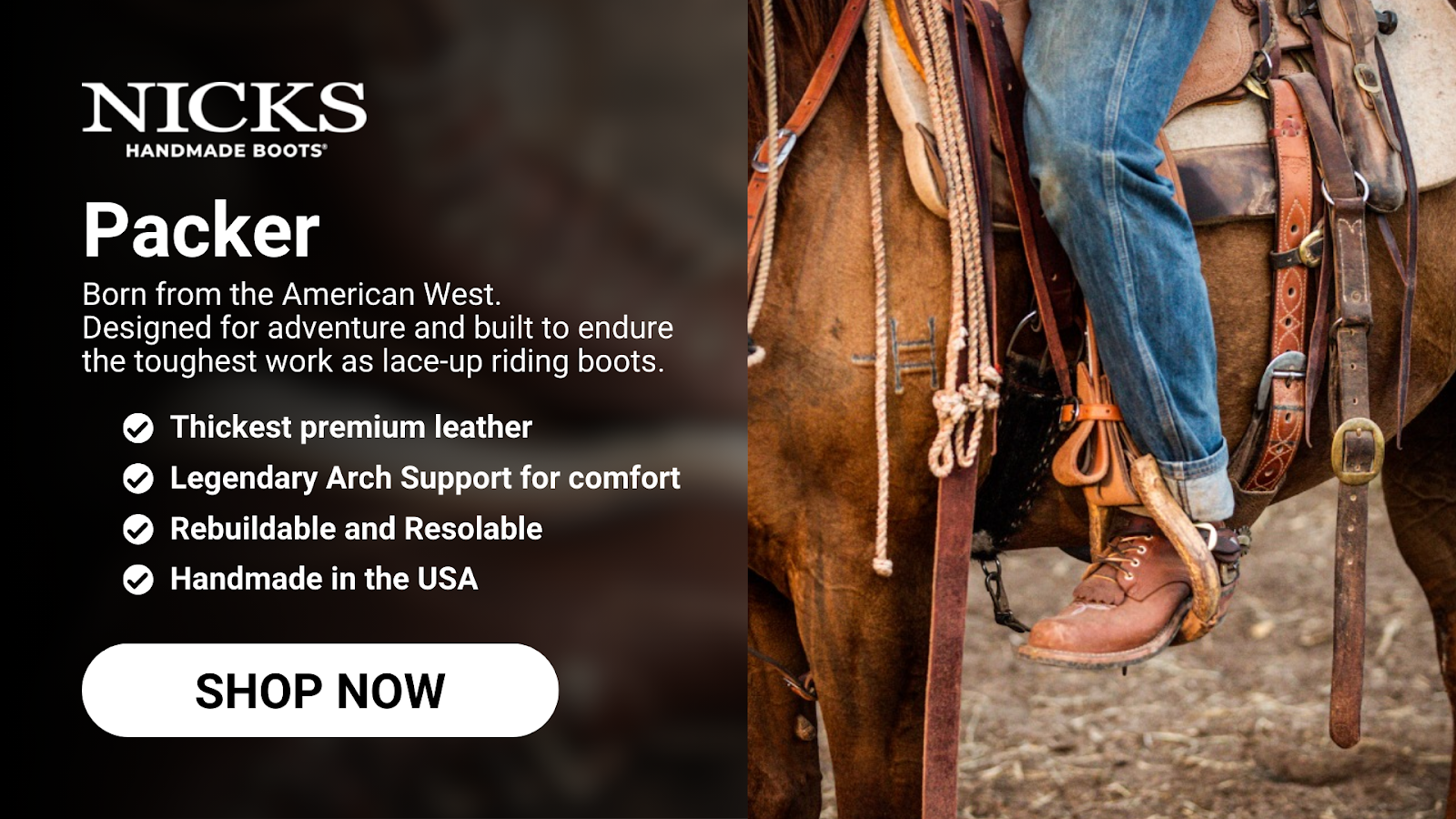

Final Thoughts
A well-maintained leather jacket isn’t just a piece of clothing—it’s an investment in timeless style and durability. Proper care ensures that its rich texture, natural character, and strength improve with age. Every step, from regular cleaning to conditioning, plays a role in preserving its quality and making it a long-lasting wardrobe staple. Like any natural material, leather responds to how it’s treated, rewarding attention and care with a distinctive patina and lasting elegance. Whether it’s a rugged everyday essential or a refined statement piece, taking the time to maintain your leather jacket means it will continue to serve you well for years to come.
Read also:
Frequently Asked Questions About How To Clean A Leather Jacket
Can I use baby wipes to clean my leather jacket?
Avoid using baby wipes on leather, as they often contain chemicals and alcohol that can dry out the material. Over time, repeated use may cause discoloration or a sticky residue. Instead, use a damp microfiber cloth with mild soap for safe cleaning.
What should I do if my leather jacket gets wet in the rain?
Pat the jacket dry with a soft towel and let it air dry naturally in a cool, well-ventilated area away from direct heat. Never use a hairdryer or heater, as excessive heat can cause the leather to crack. Once dry, apply a leather conditioner to restore lost moisture.
Can I use a hairdryer to speed up drying after cleaning?
No, using a hairdryer or any direct heat source can dry out the leather and lead to cracks. Always let the jacket dry at room temperature, preferably on a padded hanger. This prevents stiffening and ensures the leather remains flexible.
How do I remove an unpleasant odor from my leather jacket?
Hang the jacket in a well-ventilated area for a few hours to allow natural airflow to reduce odors. For persistent smells, place it in a breathable garment bag with a small container of baking soda to absorb unwanted scents. Avoid fabric sprays, which may leave residues or alter the leather’s finish.
Can I use vinegar and water to clean my leather jacket?
A diluted vinegar solution can help with mild stains, but it should be used sparingly to prevent drying out the leather. If you use vinegar, use a leather conditioner to replenish lost moisture. For tougher stains, a leather-specific cleaner is a safer option.
Is it safe to iron a leather jacket to remove wrinkles?
Never iron leather directly, as high heat can damage its natural fibers. If wrinkles appear, hang the jacket in a humid bathroom while running a hot shower to let the steam naturally relax the leather. For stubborn creases, a professional leather specialist can safely remove them.
How can I prevent my leather jacket from fading?
Keep your jacket out of direct sunlight for extended periods, as UV exposure can cause fading. Store it in a cool, dark place when not in use, and apply a leather conditioner regularly to maintain its color and texture. If fading has already occurred, a leather repair specialist may be able to restore the original color.
What’s the best way to clean the lining of a leather jacket?
Turn the jacket inside out and spot-clean the lining with a mixture of mild soap and warm water. Use a damp cloth to wipe it gently, avoiding excessive moisture to prevent damage to the leather. Let it air dry completely before wearing or storing it.
Can I waterproof my leather jacket?
Yes, applying a leather protector or water-resistant spray can help shield your jacket from rain and moisture. Be sure to choose a product specifically designed for leather to avoid damage. However, waterproofing does not make the jacket completely resistant to water, so always take precautions.
How do I store my leather jacket for long periods without damage?
Store your leather jacket on a sturdy, padded hanger in a well-ventilated closet away from direct sunlight and moisture. Avoid plastic covers, as they trap humidity, leading to mold. A breathable garment bag is the best option to protect it from dust while allowing airflow.
